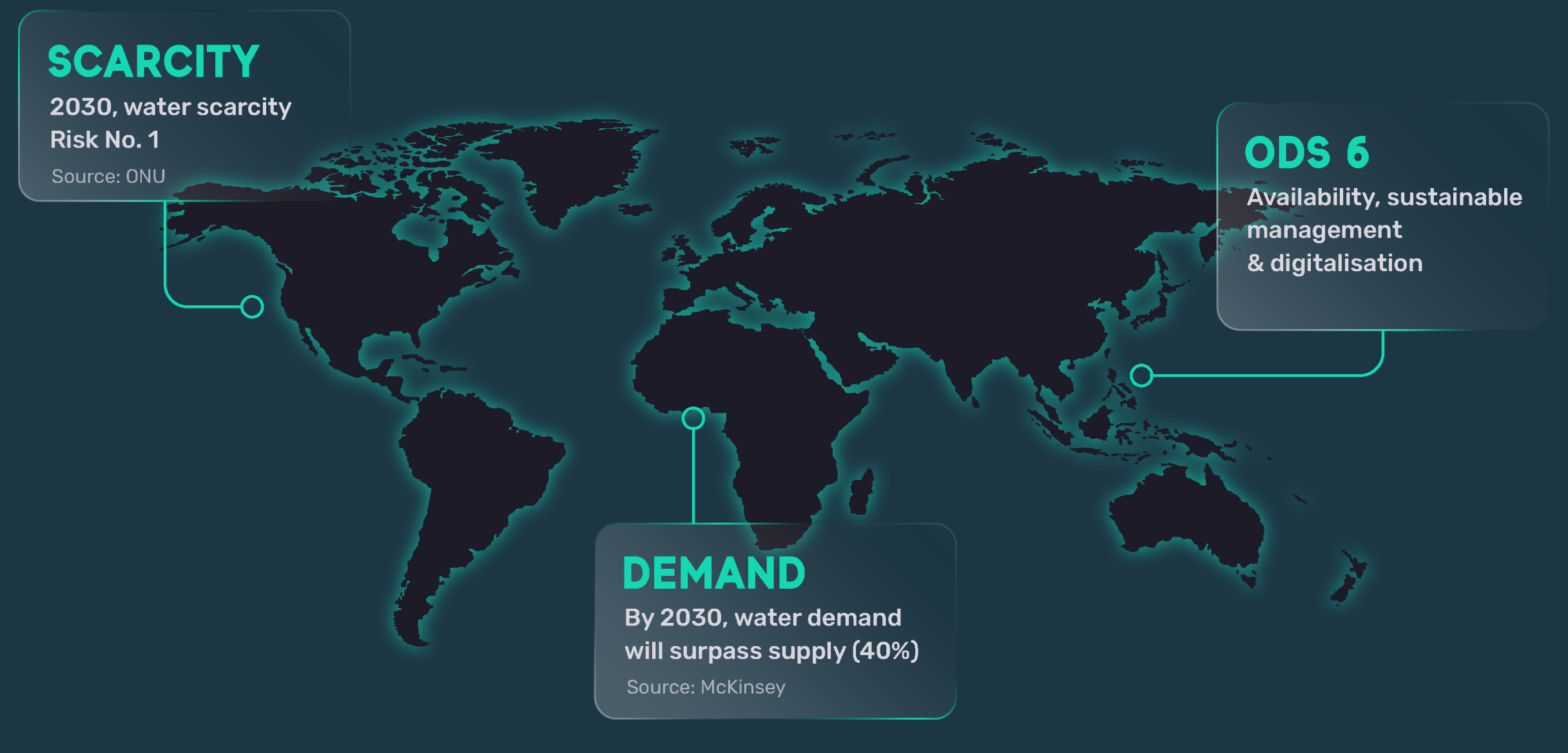Problem

Freshwater constitutes a small fraction of the world's water reserves, yet it is the cornerstone of life in terrestrial ecosystems and its utility for human beings is crucial.
In the next century, challenges posed by climate change and the growing imbalance between the supply and demand of fresh water plus human action and demographic growth will drastically alter the water cycle. However, no one expects that the most productive original states will be restored or survive in the face of increasing land development pressures and demand for water basins. According to data, water use is expected to increase by 40% by 2030, and even today, excessive consumption is observed in some cities, with many regions of the world already limited by the quantity and quality of available water. Some of the data characterizing the current issue are [1,2]:
- About 0.02% of Earth's water is drinkable.
- An average of 12 liters per person is wasted waiting for hot water.
- Lack of real-time data from current water meter devices.
- 884 million people worldwide do not have access to potable water.
- 36% of the world's population, 2.4 billion people, live in regions with water scarcity.
- 52% of the population will experience severe water scarcity by the year 2050.
- The amount of water wasted could supply about 200 million people.
- Just in the shower, the average waste waiting for hot water is 20,000 liters per person.
- The global average water footprint is 1,385 m³ per year per person.
- The average daily water consumption in Spain is 366 liters per person, and in the U.S., it is 575 liters.
Among the sustainable development goals (SDGs) set by the UN for the planet, ensuring the availability and sustainable management of water (SDG 6) and the digital transformation of the supply (SDG 13) are priorities.
Therefore, it is crucial to plan and manage water resources in an efficient and sustainable manner, to create a favorable scenario for the future of the Earth and humanity. This involves proper design and monitoring of supply networks to provide potable, clean, and safe water [3]. Sensible water planning involves promoting consumption reduction, facilitating safe reuse, and ensuring a cost-effective water supply, where governments and businesses adopt policies that foster sustainable change in its use [4].
On the other hand, there is an urgent need to collect accurate data on water quality and consumption in real time, as well as to promote water conservation. The new economic and resource management paradigm is being transformed by technologies such as Blockchain and Artificial Intelligence (AI). These innovations are changing the conceptualization of money and affecting various sectors, not just the financial one. They allow for the creation of unique digital assets such as water footprint certificates, facilitate secure and efficient transactions, and promote economies based on incentives. Their impact extends to critical areas like water management, where they drive sustainable solutions and benefit both the environment and communities. AI, in particular, enhances the accuracy and cost-effectiveness in resource management, such as water, through real-time monitoring and analysis.
[1]: Hoekstra, A. Y. (2019). The water footprint of modern consumer society. Routledge. [2]: Cf, O. D. D. S. (2015). Transforming our world: the 2030 Agenda for Sustainable Development. United Nations: New York, NY, USA. [3]: Shiklomanov, I. A. (1991). The world’s water resources. In Proceedings of the international symposium to commemorate (Vol. 25, pp. 93-126). [4]: Loucks, D. P. (2000). Sustainable water resources management. Water international, 25(1), 3-10.